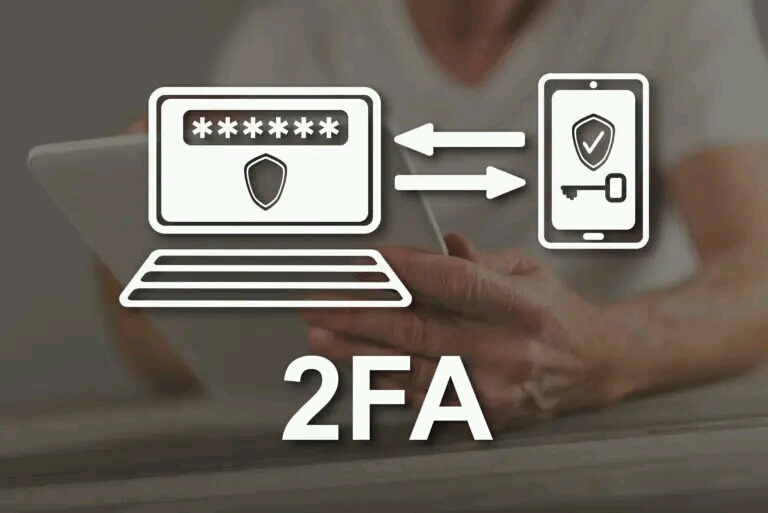How Can Two-Factor Authentication (2FA) Be Implemented for Public Websites?

How Can Two-Factor Authentication (2FA) Be Implemented for Public Websites?
In this post titled ; How Can Two-Factor Authentication (2FA) Be Implemented for Public Websites?, the following sub-topics are explained:
What Is 2FA?
Common Forms of 2FA.
How can 2FA be implemented for public websites?

What Is Two-Factor Authentication (2FA)?
Two-factor authentication (2FA) is a security process in which a user is required to provide two different forms of identification in order to access an account or service. This is typically a combination of a password and a code sent to a mobile phone or generated by an app. The goal of 2FA is to make it more difficult for an attacker to gain unauthorized access to an account, even if they have obtained the password.
2FA provides an additional layer of security by requiring a user to provide two forms of identification instead of just one. This makes it more difficult for an attacker to gain unauthorized access to an account, even if they have obtained the password.
Some common forms of 2FA include:
SMS or text message-based 2FA: A code is sent to the user’s mobile phone via SMS or text message, which the user must enter in addition to their password.
Mobile app-based 2FA: A code is generated by a mobile app, such as Google Authenticator or Authy, which the user must enter in addition to their password.
Biometric 2FA: A fingerprint or facial recognition is used to verify the user’s identity in addition to the password.
Hardware token-based 2FA: A physical token, such as a key fob, generates a code that the user must enter in addition to their password.
Overall 2FA is a powerful security measure that helps protect against unauthorized access to online accounts and services, and is becoming increasingly common in both personal and enterprise contexts.

How Can 2FA Be Implemented for Public Websites?
Two-factor authentication (2FA) can be implemented for public websites in a few ways. One common method is to use a time-based one-time password (TOTP) algorithm, which generates a unique code that changes every certain period of time (e.g. every 30 seconds). The code can be generated by an app on the user’s smartphone, such as Google Authenticator or Authy.
Another method is to use push notifications to prompt the user to approve or deny the login attempt from their mobile device.
Additionally, SMS-based 2FA can also be implemented. This sends a verification code to the user’s mobile phone via text message, which the user enters to complete the login process.
It is important to note that, SMS-based 2FA is not as secure as other methods, because it can be vulnerable to SIM swapping attacks.
Another way to implement 2FA for public websites is through the use of security keys, which are physical devices that the user can plug into their computer or connect wirelessly to their mobile device.
When the user attempts to log in, they will be prompted to touch the security key to confirm their identity. This method is considered to be very secure as it eliminates the risk of phishing and other types of attacks that can be used to steal the user’s credentials.
Additionally, biometric authentication methods such as fingerprints, face recognition and voice recognition can also be used as a second factor of authentication.
It is important to note that, while 2FA adds an extra layer of security to the login process, it is not a silver bullet and should be used in conjunction with other security measures such as strong passwords, encryption, and regular security audits.
It’s also important to consider the usability of 2FA, as adding too many steps or complexity in the authentication process can discourage users from using it, or cause them to look for ways to bypass it.
Another way to implement 2FA for public websites is through the use of email-based verification. This method sends a verification link or code to the user’s email address, which the user must click or enter to complete the login process. This method is relatively simple and easy to implement, but it may not be as secure as other methods, as it relies on the security of the user’s email account.
Additionally, some websites may also use a combination of 2FA methods, such as using a security key for the first factor of authentication, and a TOTP code or push notification for the second factor. This approach can add an extra layer of security and can also provide a fallback option in case the user loses their security key or is unable to access their mobile device.
Also, it’s important to consider the recovery process in case the user loses access to their second factor, such as providing a secondary email or phone number to receive the recovery code or allowing the user to answer security questions.
There are various ways to implement 2FA for public websites, each with its own set of advantages and disadvantages. The best approach will depend on the specific requirements of the website and its users, and it’s always best to consult with security experts to choose the best solution.
Another way to implement 2FA for public websites is through the use of a hardware security token. These are small devices that are separate from the user’s device and can generate one-time passwords (OTP) or store digital certificates. The user can use the OTP or certificate to authenticate themselves on the website. This method is considered to be very secure as it eliminates the risk of phishing and other types of attacks that can be used to steal the user’s credentials.
In addition, some websites may also use a combination of 2FA methods, such as using a security key for the first factor of authentication, and a TOTP code or push notification for the second factor. This approach can add an extra layer of security and can also provide a fallback option in case the user loses their security key or is unable to access their mobile device.
Furthermore, it’s important to make sure that the 2FA implementation is compliant with relevant regulations and industry standards, such as the Payment Card Industry Data Security Standards (PCI DSS) or the Health Insurance Portability and Accountability Act (HIPAA).
In conclusion, Two-factor authentication (2FA) is an important security measure that can help protect public websites from unauthorized access. The choice of 2FA method depends on the specific requirements of the website and its users, and it’s always best to consult with security experts to choose the best solution.
SEE ALSO : How to Secure Your Computer And Other Devices from Hackers
Hope this post on How Can Two-Factor Authentication (2FA) Be Implemented for Public Websites is helpful?
Comments are closed.